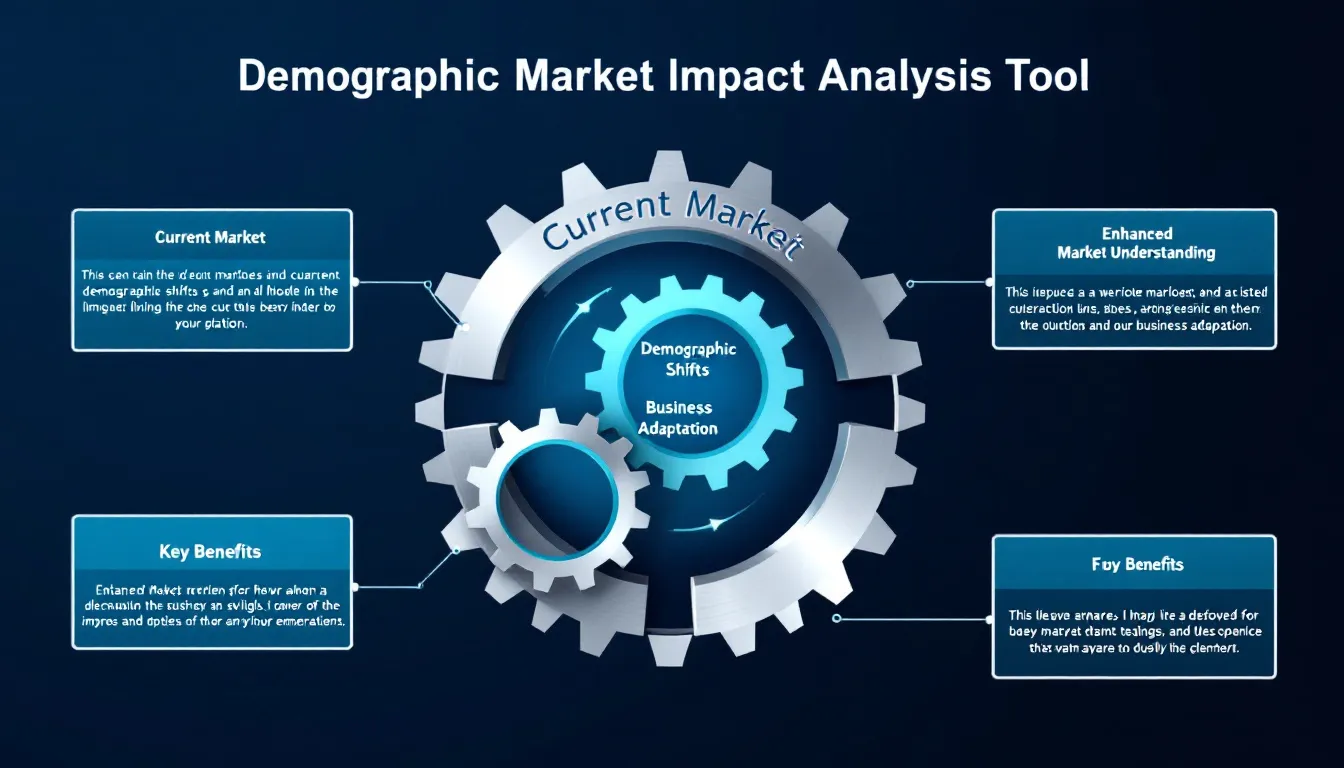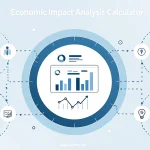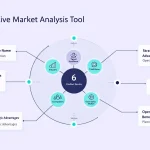Is this tool helpful?
How to Use the Demographic Market Impact Analysis Tool Effectively
1. Enter Your Business Name
Provide the official name of your company or organization. This helps personalize the analysis and relate findings directly to your business context.
- Brookfield Organic Foods – A regional organic grocery chain
- NextGen Robotics – A startup focused on industrial automation
2. Describe Your Current Target Market
Detail your existing customer segments and their market characteristics. Include specifics like:
- Age range
- Geographic regions
- Income brackets
- Consumer behavior patterns
- Purchase motivations
Example inputs:
- “Young urban professionals aged 25-35, primarily in metropolitan areas, focused on tech gadgets and lifestyle products, with annual incomes between $60,000 and $90,000”
- “Senior citizens aged 65+, mostly residing in rural communities, interested in health supplements and accessibility aids, with fixed retirement incomes”
3. Outline Key Demographic Shifts
Explain the demographic changes impacting your market. Consider factors such as:
- Population growth or decline
- Urbanization or suburbanization trends
- Changes in ethnic or cultural composition
- Economic shifts affecting consumer spending
- Technological adoption in different age groups
Sample descriptions:
- “Increasing migration of young families to suburban neighborhoods, with growing diversity and rising household incomes”
- “A growing elderly population in coastal cities, accompanied by a rise in demand for healthcare and mobility services”
4. (Optional) Identify Business Challenges
List any challenges your business faces in addressing market needs. These could include:
- Declining customer engagement
- Supply chain disruptions
- Adapting products or services to new customer groups
- Market saturation
5. (Optional) Specify Your Industry Type
Entering your industry sector allows the tool to better contextualize market impact within your business environment. Examples include:
- Renewable Energy
- Professional Consulting Services
What Is the Demographic Market Impact Analysis Tool?
This tool helps you evaluate how shifting demographics influence your customer segments and overall market position. By analyzing your current market alongside evolving demographic trends, you gain insights that inform strategic adaptations. The tool guides you in aligning your products, services, and marketing efforts with changing customer needs.
Core Purposes and Benefits
- Understand demographic changes: Spot emerging trends that affect your target audience.
- Adapt business strategy: Tailor your offerings to align with new customer segments.
- Enhance customer targeting: Improve your marketing effectiveness through focused insights.
- Mitigate risks: Anticipate market shifts before they impact your business.
- Support growth planning: Identify new opportunities for expansion and product development.
Practical Uses and Applications
Using the Tool for Market Adaptation
The tool provides actionable analysis based on your inputs, helping you craft responses to real-world demographic shifts. Examples include:
- Redesigning product lines to suit aging customers or emerging youth segments
- Adjusting marketing channels to match customer communication preferences
- Revising service delivery to better meet evolving client expectations
Example Scenario: Fitness Center
Suppose you operate a fitness center that traditionally serves young adults but notices a rising number of middle-aged customers. Your inputs might be:
- Current Market: Adults aged 20-35 in urban areas preferring high-intensity workouts
- Demographic Shift: Increasing middle-aged population seeking wellness and low-impact exercise
Your analysis highlights opportunities such as adding low-impact fitness classes, investing in rehabilitation equipment, and targeting marketing campaigns to this new segment.
Retail Business Adaptation
A boutique store catering to young professionals may observe demographic shifts toward suburban families. Inputs could include:
- Current Market: Urban professionals aged 25-40 focused on fashion trends
- Demographic Shifts: Growth in family households with children in surrounding suburbs
The tool’s analysis might recommend expanding product lines to include family and kids’ apparel, adjusting store locations closer to suburban areas, and revising marketing messages accordingly.
Why Use This Market Impact Analysis Tool?
Strategic Business Benefits
- Gain a clear picture of your evolving market
- Develop proactive business strategies informed by data
- Increase customer retention with targeted products and services
- Reduce exposure to market disruptions
- Enhance competitive positioning with timely insights
Operational Advantages
- Make decisions based on verified demographic data
- Optimize resource allocation toward growth areas
- Improve product development by understanding specific customer needs
- Align customer service efforts with shifting market demands
Frequently Asked Questions About the Demographic Market Impact Analysis Tool
How often should I perform demographic market analysis?
Conduct the analysis quarterly or whenever you notice significant changes in your customer base or market conditions. Regular updates help you stay aligned with shifting demographics.
Can I analyze multiple locations separately?
Yes, the tool supports distinct analyses for each location, which helps you understand regional demographic variations and tailor strategies accordingly.
Which industries benefit most from this tool?
Businesses in retail, healthcare, education, and service sectors find the tool especially useful, but any company serving evolving consumer markets gains from its insights.
How do I implement the tool’s recommendations?
Start with manageable adjustments, monitor their impact, and progressively scale successful changes. This approach ensures smooth adaptation and reduces risks.
Should I focus on current demographics or emerging trends?
Balance both. Serve your existing customers effectively while preparing for projected demographic shifts to maintain market relevance over time.
Can I combine this tool with other business planning methods?
Yes, use it alongside market research, customer feedback systems, and strategic planning tools to build comprehensive growth strategies.
Advanced Tips for Maximizing the Tool’s Value
Integrate with Your Data Systems
- Merge insights with your existing customer databases
- Combine demographic trends with sales analytics
- Reference broader market research for deeper context
- Ensure alignment with your business growth targets
Plan for the Long Term
- Use findings for 3-5 year strategic planning cycles
- Design phased adaptation strategies to reduce disruption
- Create actionable plans for responding to demographic shifts
- Develop flexible business models able to evolve with the market
Important Disclaimer
The calculations, results, and content provided by our tools are not guaranteed to be accurate, complete, or reliable. Users are responsible for verifying and interpreting the results. Our content and tools may contain errors, biases, or inconsistencies. Do not enter personal data, sensitive information, or personally identifiable information in our web forms or tools. Such data entry violates our terms of service and may result in unauthorized disclosure to third parties. We reserve the right to save inputs and outputs from our tools for the purposes of error debugging, bias identification, and performance improvement. External companies providing AI models used in our tools may also save and process data in accordance with their own policies. By using our tools, you consent to this data collection and processing. We reserve the right to limit the usage of our tools based on current usability factors.







